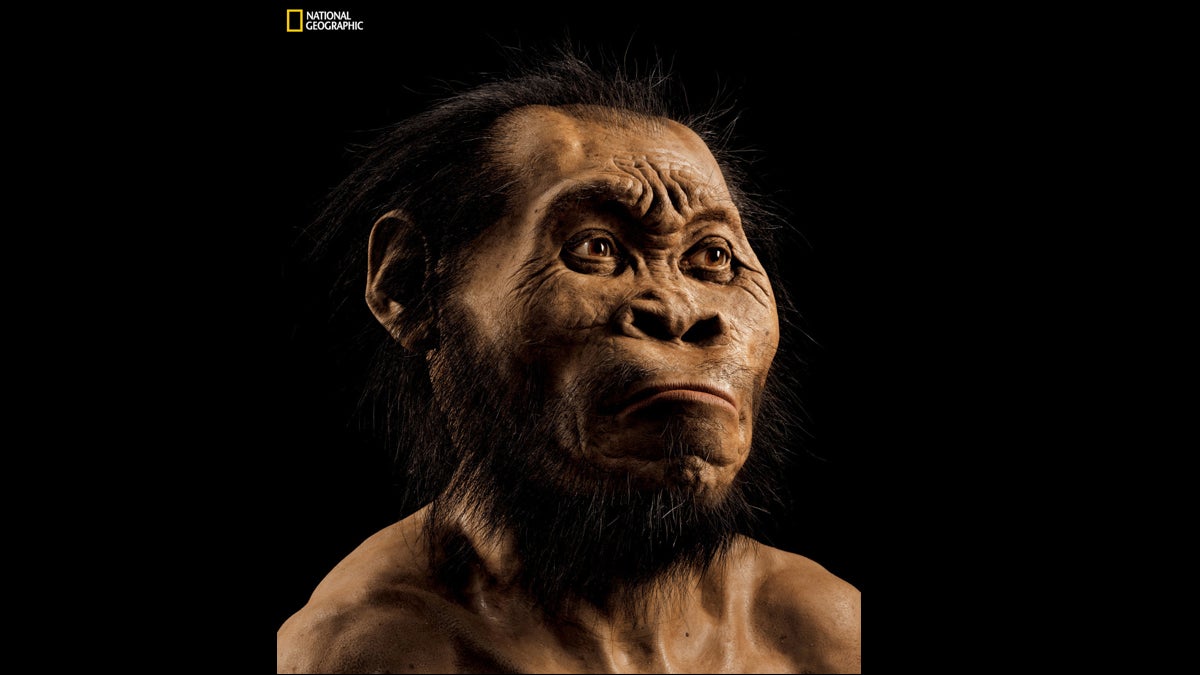Homo Naledi – missing link or missing context?
Listen
This March 2015 photo provided by National Geographic from their October 2015 issue shows a reconstruction of Homo naledi's face by paleoartist John Gurche at his studio in Trumansburg
Science gets a moment in the spotlight and does what science is best at…
An ancient man was trending on Twitter this week.
The discovery of #HomoNaledi could transform our understanding of human evolution: http://t.co/hy8vb9WW54 pic.twitter.com/HsFUi9O83c
— CNN (@CNN) September 10, 2015
How #HomoNaledi challenges what we thought we knew about our early evolution: http://t.co/lbZAMZ5PtR pic.twitter.com/NovXgNEwYe
— Slate (@Slate) September 10, 2015
Meet the newest, ancient member of the family #HomoNaledi http://t.co/SouwiZ5lt5 pic.twitter.com/aXgrZsVALN
— New Scientist (@newscientist) September 10, 2015
This new hypothesized precursor to the modern human being was dubbed Homo naledi after its place of discovery, Dinaledi Chamber of the Rising Star Cave system in South Africa.
The news was a rare moment in which anthropologists, and their cousins paleoanthropologists, get a moment in the warmth of the news cycle, and what do they do but go and start sowing seeds of doubt.
“In some cases it appears that definition is almost arbitrary in some way, depending on the people who are doing the description,” said paleoanthropologist Janet Monge, a professor in the school of Anthropology at the University of Pennsylvania.
Monge says the features Homo naledi display are not new to paleoanthropologists, but her reading of the paper, which presented this discovery, has her believing that the 50 or so authors believe it’s the combination of features that set Homo naledi apart from the other branches of the human ancestral tree that we already know exist.
“A relatively small brain, particular kinds of features of the [teeth]…as well as of being of a particular height…” are a few of the features that distinguish Naledi.
But for Monge, the article has a chink in its armor. An important chink: time.
“This is where I would say that the article as it’s been presented in publication today would fall short,” she said. “It seems as if they don’t have a sense of the time frame in which the fossil inhabited. So we don’t know if it’s earlier than other members of our lineage that have already been identified, or it’s a contemporary with other things that have already been identified. So, without a really, really strong geological context, it’s very hard to say really anything about the place of this form in human evolution. Any time you have any fossil that’s decontextualized geologically, it’s very difficult to say too much about it.”
Monge says Homo naledi is an exciting opportunity to discuss the complicated evolution of humanity and the bigger ideas of what defines a species. But, she says, the academic community will be the ultimate judge as to whether this latest ancestor will become part of our long-term understanding of our roots, citing the mantra of the scientific community when faced with new discoveries…
“Time will tell.”
WHYY is your source for fact-based, in-depth journalism and information. As a nonprofit organization, we rely on financial support from readers like you. Please give today.



